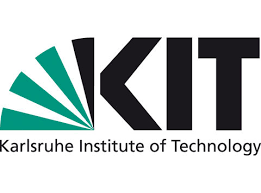Karlsruhe Institute of Technology: Bioeconomy: From the flat share to the microbe home
Microorganisms are the oldest, most common and most diverse forms of life on earth and offer enormous potential for biotechnological applications. To date, however, only a fraction of it has been isolated and cultivated. The research project “MicroMATRIX” funded by the Federal Ministry of Research with 1.5 million euros, under the leadership of the Karlsruhe Institute of Technology (KIT), aims to shed more light on microbes by developing a cultivation pipeline for previously non-cultivable microorganisms with biotechnological relevance from environmental samples.
“Microorganisms are the catalysts of a bio-based industry and play a central role in many biotechnological processes. The development of our society towards a sustainable bioeconomy makes it necessary to supplement and replace established procedures with biotechnological processes, ”says Dr. Kersten Rabe from the Institute for Biological Interfaces 1 at KIT, who coordinates the MicroMATRIX project. “In addition, new types of bio-based materials can be developed on the basis of biological systems. In this way, for example, the lack of new therapeutics in health research can be remedied, ”emphasizes Rabe.
There are still many white spots in the world of microbes
Despite their great importance, microorganisms are still completely insufficiently researched and used today. It is estimated that 99 percent of all microbial species have not yet been cultivated. The reason for this: They cannot yet be isolated because they are part of consortia of different microorganisms and often occur naturally in biofilms. Many microorganisms live in this community and form layers of slime, such as those found on rocks in water. The microorganisms produce a surrounding “matrix” which, in addition to the exchange of nutrients and messenger substances, plays a major role in the structure of these “residential communities”. The aim of the project team is to technically imitate these factors. So far not cultivable,
Genetic manhunt with the prospect of good growth
In the MicroMATRIX project, experts from research and industry are working together in the fields of bioinformatics, micro and molecular biology, engineering and chemistry and will develop the necessary technologies and procedures over the next three years. With the help of analyzes of the genetic information of a naturally occurring mixture of microorganisms, individual biotechnologically interesting microorganisms are identified and the best conditions for their growth are predicted. “In particular, the rapidly developing methods of genome analysis, for example single cell genomics, help us to research ‘dark matter’ in the world of microorganisms”, emphasizes Professor Anne-Kristin Kaster, Director at the Institute for Biological Interfaces 5 at KIT, which deals in the project team with the bioinformatic identification and the targeted sorting of the organisms. Specific organisms should be specifically marked fluorescent and thus separated from the rest of the community. The colored organisms are then placed in special cultivation systems where they can grow under optimal conditions.
About the MicroMATRIX project
The Federal Ministry of Education and Research (BMBF) is funding the MicroMATRIX project (stands for Microbial cultivation based on Meta-omics Assisted, Targeted soRting and Isolation in a customized matriX ) over three years with 1.5 million euros. The KIT Institutes for Biological Interfaces 1 and 5 and the Institute for Applied Biosciences are involved in the project. Further partners are the Technical University of Hamburg, the University of Tübingen and the Freiburg company Cytena. The project started in June.

